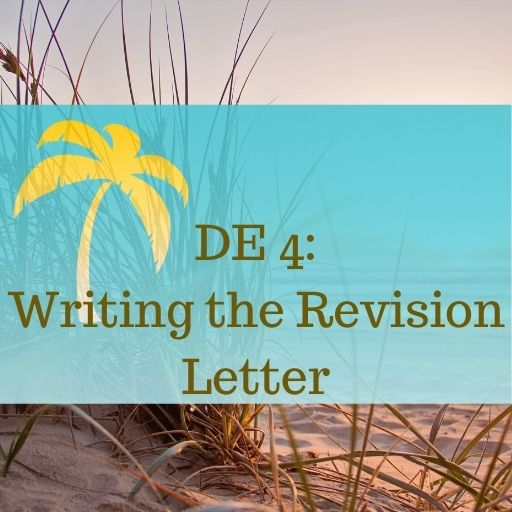Revision Letter Overwhelm
As one who teaches editors, recently I’ve been encountering revision letters (sometimes called editorial or edit letters) that run twenty, thirty, and even forty single-spaced pages.
I can’t imagine how an author would react to an opus like this landing in their inbox.
Actually, I can imagine. Panic, tears, anxiety, overwhelm, and probably shutdown.
Please don’t do this to your clients.
What the Revision Letter Should Contain
Here’s what I’ve noticed about most of these lengthy revision letters. They’re trying too hard to teach the author how to write a novel. But a writer can’t be taught how to write a novel in twenty or even forty pages; it’s a lifelong learning process. What you can do instead is provide resources for the author’s further exploration.
For a developmental edit, the revision letter should contain:
- an overall description of the three-to-five main problems that you’ve identified in the manuscript
- one or two specific examples of each problem (from the manuscript)
- a brief description of why the problem is a problem for this manuscript (not something generic like “don’t overuse adverbs”)
- suggested solutions for the problems you’ve identified
That’s it. You can include a list of resources at the end, as I suggest above, and if you can’t bear to restrict yourself to just three-to-five main issues to address in the revision, you can include a brief bullet list of other issues that will need attention as the author revises.
You should be using edits and editorial queries on the manuscript itself to do most of the editorial work. The revision letter is just an overview of the edit.
Why Editors Write Long Letters
Typically editors write super-long letters when they are not as confident in their work as they should be. They’re often trying to establish that they are experts. However, the way to establish expertise is not to include a bunch of generic information about the writing process or about storytelling techniques, but to show the author how to apply this information to their particular story. That’s where an editor’s real skill shines through.
Additionally, editors will often write long letters because they don’t want to leave any stone unturned. If there’s a problem in the ms, they are right there to point it out! But an author cannot be expected to effectively address fifty different developmental problems in one round of revision.
And finally, of course, editors want to make sure that their clients are getting what they pay for. And to many editors, that equals a nice, juicy revision letter. That’s the tangible proof that they’ve done a lot of hard work. But the hard work isn’t in the revision letter, it’s in the edit. It’s in the judgment an editor brings to the table, their ability to cut through the murk and provide clear guidance to the author. And clear guidance is more likely to emerge in five or ten pages than it is in thirty pages.
Why Not a Long Letter?
I can hear you now: your clients love your long letters! No one has ever once complained about the length!
Well, excellent. But that doesn’t mean your letters are effective or efficient. One of the letters I recently encountered ran about 20,000 words. That’s one-quarter of the length of a book! Why are you spending your precious life pounding out that many words when 3,000 would do? Write a book instead of revision letters. Or plant a rosebush or watch the sunset or play fetch with your dog.
Lengthy revision letters often bury the gems. The most important guidance the editor is giving gets buried in a welter of information, thus shifting the burden to the author to figure out what the heck the guidance is. It would be better for the editor to unbury their own gems and let them light the way for the author.
The vast majority of these letters are also very generic. They just say standard things like, “A character arc is . . .” for five pages without specifically referencing the author’s work, what the problems are, and what could be done to address them.
Finally, a long letter is disrespectful of the author’s time. Consider the typical author’s time-pressed life. They’ve got a day job, kids or aging parents or both, demands and tasks and chores all day long. They are cramming their creative work into an already full life, finding fifteen minutes here and an hour there and now their editor is expecting them to read a thirty-page letter that they have to deconstruct to find the guidance.
When I ask an expert for advice, I don’t want to suffer through forty pages of background. I want to know what I can do right now to address the issue. Do I need surgery? Is the apartment still for rent? Do I owe more in taxes than I thought? Where do I register for seguridad social in Málaga? I guarantee you I do not care about the history of the Ayuntamiento system in Spain, and when I do care I will take steps to find out.
It may be that your lengthy revision letters are perfect and your authors do love them and you can safely ignore my advice. But I would ask you to please give my thoughts on this issue a little reflection. You may be doing more, and asking more, than you should.
Join the Club!
New to story editing? Begin at the beginning.




